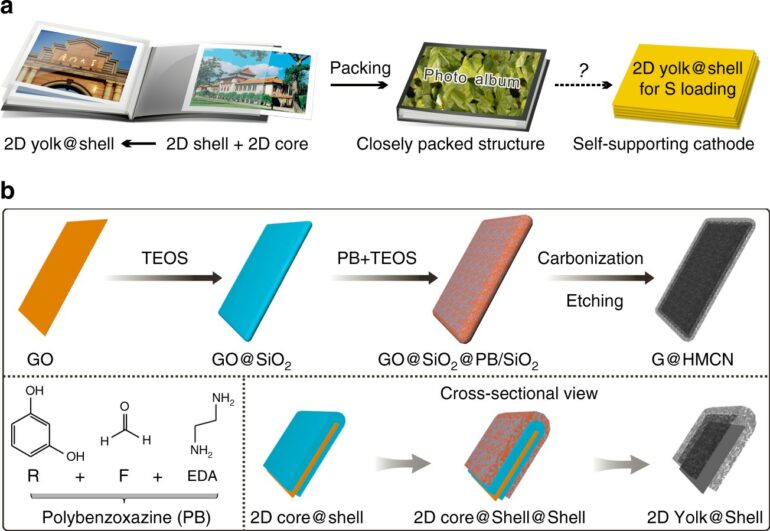Electric vehicles and portable electronic devices such as laptops and mobile phones are unthinkable without lithium-ion batteries. The problem is highly toxic materials such as cobalt are often used for the cathodes of these batteries, which jeopardize the environment and the health of people in the countries where they are mined. In addition, the reserves of these metals are very limited.
A research team at Humboldt-Universität zu Berlin (HU) has now achieved a decisive breakthrough in battery technology. The team, led by Prof Dr. Michael J. Bojdys, has developed a high-performance sulfur-based cathode.
Sulfur is a sustainable alternative to the materials commonly used in lithium-ion batteries because it is less toxic and—unlike cobalt—is abundant. However, the storage capacity of batteries in which sulfur is used as a cathode material has so far declined rapidly.
The researchers have now been able to solve this problem. The results of the study have been published in Angewandte Chemie.
“Our development paves the way for sulfur electrodes as a viable alternative to conventional metal-based cathodes. It could fundamentally change the way we store and use energy and represents an important step towards a more sustainable future,” explains Prof Bojdys.
Solving the sulfur-shuttle problem using polymer chemistry
With sulfur-based cathodes, the mobility of the sulfur has so far led to a degradation of the battery—an effect known as the sulfur-shuttle. In the newly developed solution, the sulfur is encapsulated in a special microporous polymer network so that the sulfur particles are retained. This battery technology not only increases the performance and service life of batteries but also avoids the problem of scarce resources.
Prof Dr. Michael J. Bojdys is an expert in sustainable energy materials and is helping to transform the chemical industry in the Berlin capital region by combining science and industry to create a circular economy based on sustainable raw materials.
More information:
Guiping Li et al, One‐pot Synthesis of High‐capacity Sulfur Cathodes via In‐situ Polymerization of a Porous Imine‐based Polymer, Angewandte Chemie International Edition (2024). DOI: 10.1002/anie.202400382
Provided by
Humboldt-Universität zu Berlin
Citation:
Storing and utilizing energy with innovative sulfur-based cathodes (2024, April 24)
